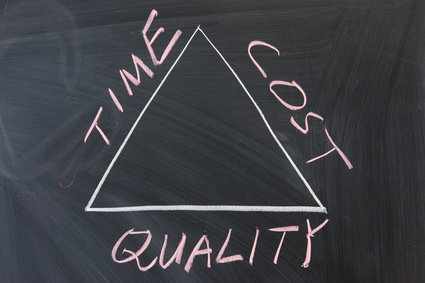By now you’ve got a handle on what a search engine is, how optimisation came about and the importance of keywords.
While keywords may be the main link between the person searching for your product and your product, there are also a lot of other businesses – your competitors – who want to make that link as well. This is where search engine optimisation really comes into play.
If you google the word ‘black shoe’, Google will show that it has 335 million web pages that could possibly have something to say on the subject of black shoes. How do they choose the top 15 or so websites to put on the first page?
The Truth Is… No-one Knows
Search engine marketing experts are constantly trying to find the best way to ensure a page gets ranked at the top of the results. No-one really knows exactly what it is that Google uses to decide which webpage is better than another.
Why?
Google’s goal is to make the end user’s experience as quality and authentic as possible. Whenever advertisers realise that there’s a way to ‘game the system’ and get a website ranking highly, a host of cheaply-made sites with little to really offer a browser swim to the top. This is because they are built by a professional Search Engine Optimisation specialist – you might say ‘black hat search engine optimisation specialists’. These are the people who use techniques to just get to the top of the rankings pile rather than try to provide a quality experience for web browsers. Their goal is to sell the top ranking – or the leads they generate – onto a website who really does provide the service the browser is looking for.
Google hates this. If users keep finding low quality websites that require and additional step to get to the information they want they will eventually start using a different search engine (although it might take a while!). So Google consistently changes it’s algorithms to try to keep the dodgy websites out of the top rankings. In fact, Google changes it’s algorithms over 500 times every year!
What Do We Know?
We know that there are 200 – yes, hundred! – different factors that Google uses to decided what websites are worth ranking to the top. That’s a lot of factors! Google has confirmed that some of factors included are:
- Links: other sites linking to your website and you link to other sites. This is much more complicated than just a set number. Links are ranked by quality, how often they change and how many links there are from each website source!
- Site Content: the words on your page (keywords), how often keywords appear, how constantly your content is updated and how it interconnects with the rest of your content.
- Visitors: How many people currently visit your site, whether they come back, how long they stay and whether the number of visitors is going up or down.
- Domain Name: How long your domain name has been registered and how often it has changed ownership.
That’s just a small example of how many different factors go into the ranking of your website. This is why it is possible to spend a lot of money, time or effort on attempting to optimise your website for high rankings and not see any results. It takes a lot of time and effort to keep up to date with how Google ranks websites. This is where it’s helpful to get a search engine optimisation consultant to assist you with where to focus your efforts.
But why the big fuss over rankings anyway? Does it really matter? Up next: the importance of where you rank in search results.
For updates join us at Google+



